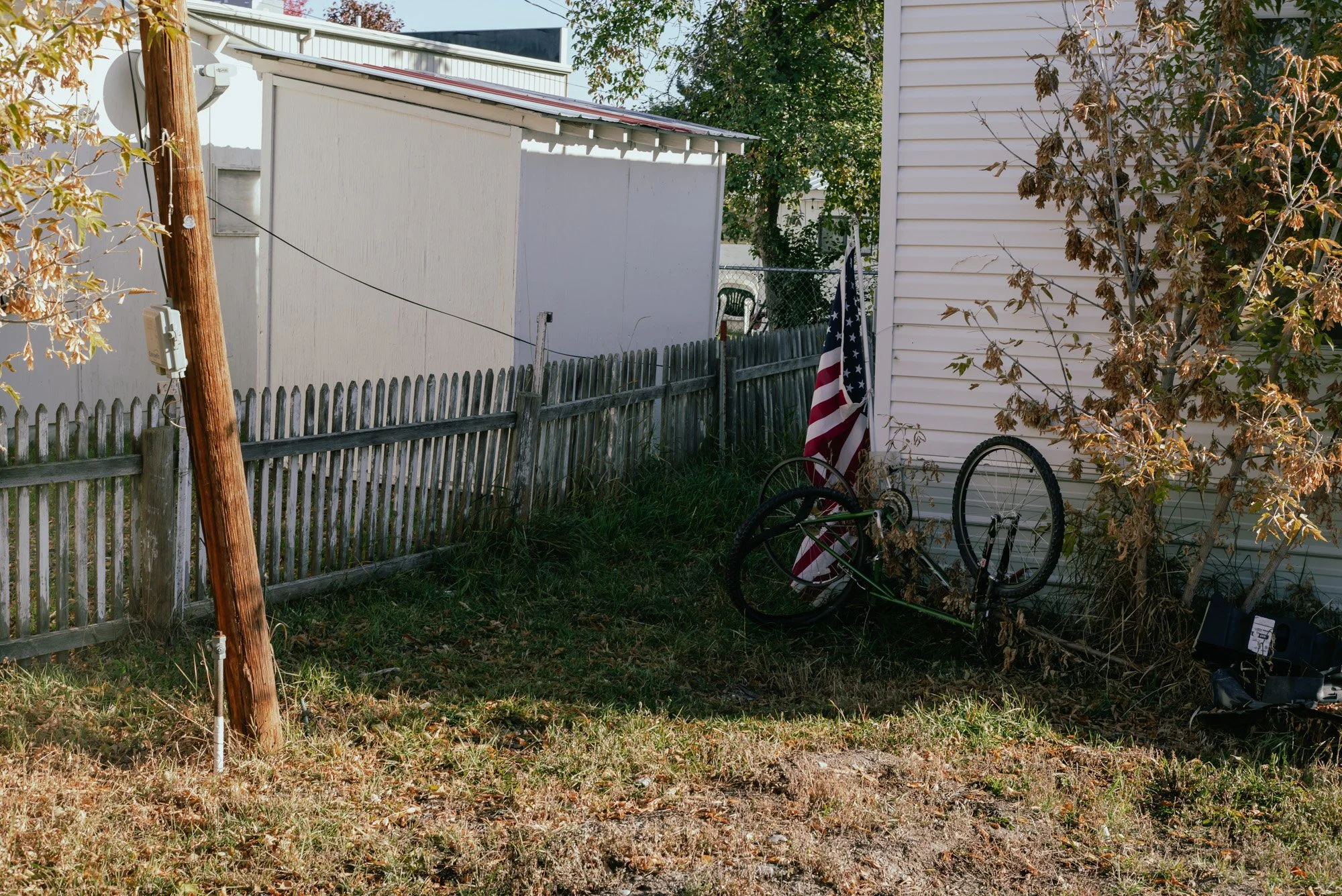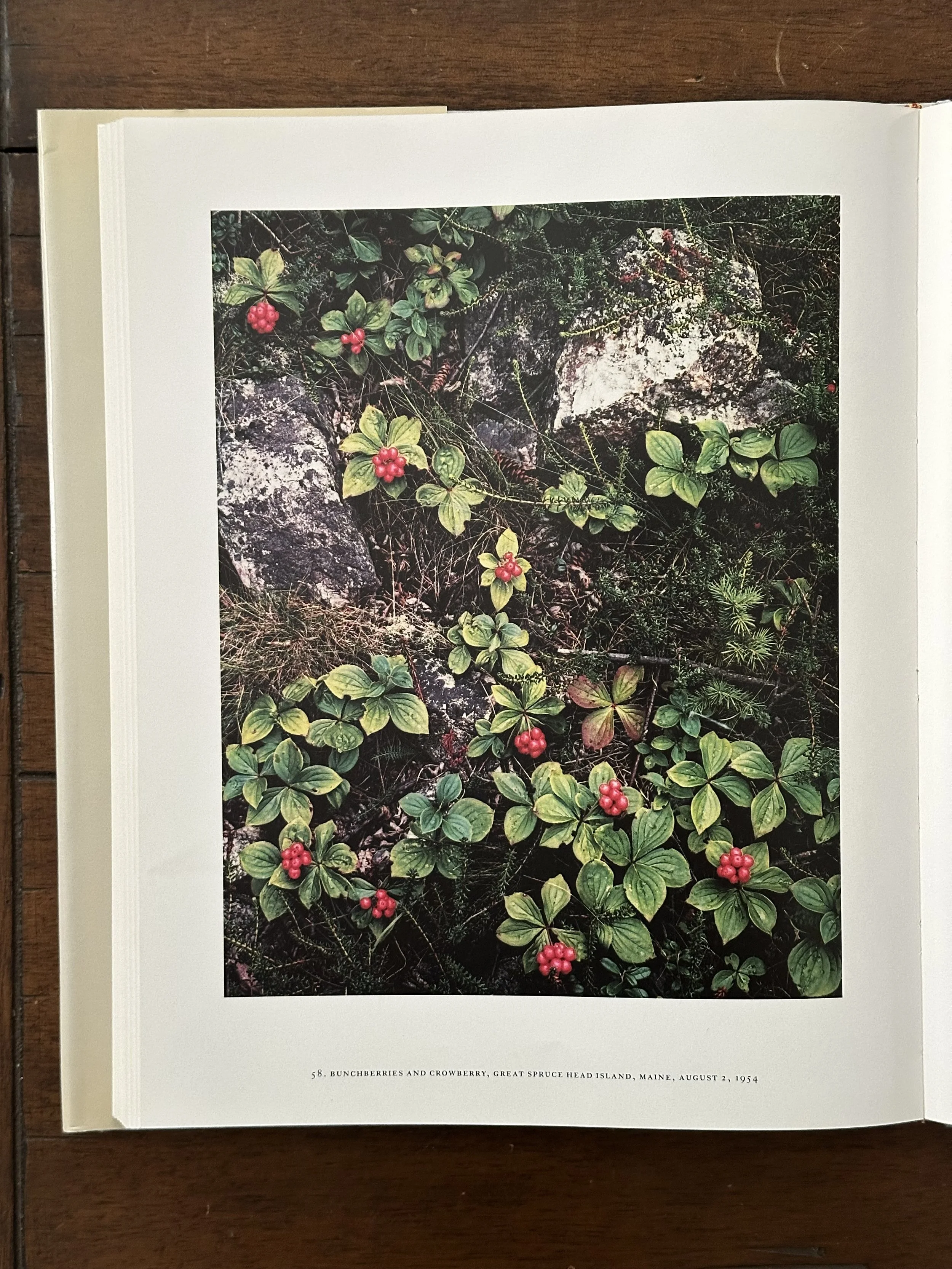Mostly niche rambling about obscure art stuff, approach with caution
Beauty and the weight of tradition
I’ve been taking the whole practice of making photographs seriously for probably 10 years at this point. And until this year black and white photography was my primary medium, to the point of exclusivity really. I would dabble in color work once every few months for a small batch of images and then go back to shooting black and white.
There is probably a complex history of why this came to be the case but the easiest explanation is probably to do with my earliest exposures to “fine art” landscape photography through the works of people like Ansel Adams, John Sexton, Michael Kenna, etc etc.. The past-masters to which one looks when learning about the craft largely all shot black and white (let’s ignore for now that it’s a historical necessity). I was also deeply moved by the beauty of the medium itself. Good black and white work has a beautiful and captivating quality, at least it did for me. I wanted to make work that moved people in the same way that I had been moved.
To me, black and white was a medium synonymous with artistic photographs. So, as someone who saw themselves trying to do something more than straightforwardly documenting the world around me with a camera, working in the medium of black and white seemed like the obvious choice. To do anything less was to do something less than “art.” I hate that term but for lack of better language I think it gets at what I mean. Black and white work carried the mystique of being the medium of “serious” photography so that was the path I followed.
A working theory, monochrome photos, and the uncanny
When you do something for so long, at least for me, you tend to wonder why you do it. You dedicate time and thought to understanding the mechanisms and motivations of the thing you’re doing. And over the years I settled on a general theory for why black and white work was superior for what I was trying to do.
I’ve outlined this theory so many times over the years I think I can get it pretty short and sweet here: A good photograph, for me, is one that is able to facilitate the experience of uncanniness. Black and white is an especially useful tool in creating the conditions for this experience because the medium is a break with our everyday experiences of things. Color, being more familiar to us, does not as easily facilitate the experience of the uncanny. So, black and white is the superior medium in this regard.
Back in a piece I wrote here on this website in 2018 I had already pretty much settled in to the main outline of this way of thinking. There I wrote the following:
”[…] through the medium of black and white we are able to present the world in ways which push our experience into the realm of the unfamiliar. And in so doing we create a space for a kind of experience which has the effect of moving us to think or see differently about subject matter being presented to us.”
To flesh this out a little bit, when I say uncanny I mean something in the photograph that allows us to in some way experience the world anew. This experience seems to me to be the root of that intangible something in a good photograph that causes us to pause and linger, to have a contemplative experience rather than a simply passive one. A Robert Adams photograph of an empty overgrown lot is meaningful because it calls us (if we’re able to listen) to sit with that empty lot and the evening light dancing across the scrub brush in a way that we wouldn’t have just bustling about our everyday lives. The world is able to come to presence in a photograph in a way that renders it unfamiliar, mysterious, worthy of a lingering consideration, uncanny. And the medium of black and white, being already removed from our normal perception, does seem to lend itself to these kinds of experiences, at least more readily than the medium of color. Given the familiarity of color, our habits of seeing (or not seeing, more accurately) can override the way we experience something, erasing the possibility of the world approaching us anew.
It was within this general perspective on the alleged unique capacity of black and white work where I stayed for the vast majority of my photographic “career.”
Color, questionable premises, and the wedge of Eliot Porter
In objective terms there’s not much wrong with the general theory I outlined above. I would even argue that the premise about uncanniness is very much true and probably the most important realization that I’ve had about what makes some work meaningful and other work miss the mark. And it does seem to me to be generally true that black and white work is in some sense “easier” for this task because of the abstraction from our everyday experience. In this weaker form I think the argument is fine. But sometimes I would put the argument in even stronger terms in some kind of puritanical attempt to make black and white photography the only avenue for making good photographs. I would sometimes say that color work is simply too close to our everyday experience to ever be able to create the conditions where that experience of uncanniness can enter the frame. I wouldn't even really consider any color work as all that important, or at the very least it couldn’t possibly be doing the same thing I was trying to do. This may have been simply my parochial insistence on only focusing on work that was similar to work I was trying to create, but regardless, it’s this stronger position that I’ve come to think is, well, pretty stupid.
We could undoubtedly highlight many, many photographers past and present doing color work that achieves the standard of good photography set above. I had obviously seen the work of color photographers but my offhand dismissal of the whole edifice of color photography often prevented me from really sitting with any work that wasn’t presented to me in shades of gray. There was one photographer that always subverted this tendency, however. That photographer was Eliot Porter. Porter began his photographic career in black and white until the late 1930’s, working with the guidance of Alfred Stieglitz. Some time in the early 1940’s he turned to color work and began producing some of the most beautiful intimate nature photography I have ever seen, all in beautiful dye-transfer color photographs.
Eliot Porter was color work that I could not deny was capable of rendering the ordinary uncannily, in full living color. For me his work was a benchmark of what good color work should feel like, and whenever I did dabble with color work over the years it was usually inspired by a recent foray through his work. In fact, my recent jump in to color work was actually precipitated by a combination of the subject matter of the later Robert Adams paired with the color of Eliot Porter. The work I envisioned in my mind is what led me to begin to explore other color work, leading me to photographers like John Gossage’s color photography, Ron Jude’s work in projects like Other Nature, Ken Abbot, Frank Gohlke, etc etc.. And in these photographers I found over and over again how wrong I had been about so much of color photography. Color work is just as capable of presenting the world to us in ways that achieve that same uncanny experience. The rub is that it’s more difficult…
Color is hard(er)
One of the things we’ve said a few times so far in this piece is that black and white work is “easier” than good color photography. I fleshed out a little bit of the reasoning for this in saying that because black and white is already a break from our everyday experience it already puts us in to a perspective where we are encountering the subject matter of a photograph in a form that is removed from our usual modes of experience. This is already a small step in to the “uncanny.” This is why there is some truth to that joke about how if you have a mediocre photo you just put it in black and white and suddenly it’s “artsy.” This isn’t said (obviously!) to disparage black and white work, I’ve spent years doing it. There’s a definite art to making black and white work that isn’t just bad photos turned kitsch by sucking the color out of it. C.f. the whole history of beautiful photography produced before color was a thing and the people who continue to make beautiful stuff in monochrome today.
But…color work, in my experience, is an entirely different animal. The fact that the medium is the same medium in which we experience the world around us makes it much harder to create images that are able to strike us, that allow the world to come to presence anew for us. That uncanny word again… I think one of the reasons I have always had such a hard time sticking to color work for any extended period of time is this very difficulty. It’s hard to figure out how to make that shift once you take away the crutch of being able to fall back on the desaturation slider. In a sense you’re forced to have to learn how to make photos all over again, at least that’s how it often felt to me. This kind of creates a situation where color work is everywhere around us, but good color work is actually hard to come by. Think of every one of the 47 million crappy hyper-realistic landscapes you come across on your Instagram feed versus the handful of color photos that actually make you stop and go, “Huh,” your thumb lingering over the screen of that smart device before you doomscroll another hour away.
Okay, that’s a lot of words to repeat the simple point that is is generally harder to make good color work because of our familiarity with a color world and the way that our experiential habits make it difficult to open up a space for this kind of unique presencing of subjects in a photograph. You get it.
Sticking with it?
I’ve been shooting color just about exclusively now for the last few months and it’s been a very interesting experience. I don’t really have any plan of stopping any time soon if I’m honest. I’ve actually found that color allowed things to come through in the photographs that had struggled to come through in monochrome. It does feel like there were things that I was seeing and experiencing when going to take a photograph that were getting lost in translation because of a stubborn insistence on black and white being the only valid medium I could work in. Unlearning this prejudice and opening myself up to the whole spectrum (lol) of color work has been a really liberating and fascinating experience.
It’s come as an interesting shock to me to learn that I have taken to shooting color so much. I remember a conversation with a friend of mine where they mentioned that I might be a color photographer despite my own history, and it is starting to feel that way. So, I’ll keep at it for now. I sometimes go out with the intention of shooting black and white from start to finish but it’s the exception now rather than the rule.









